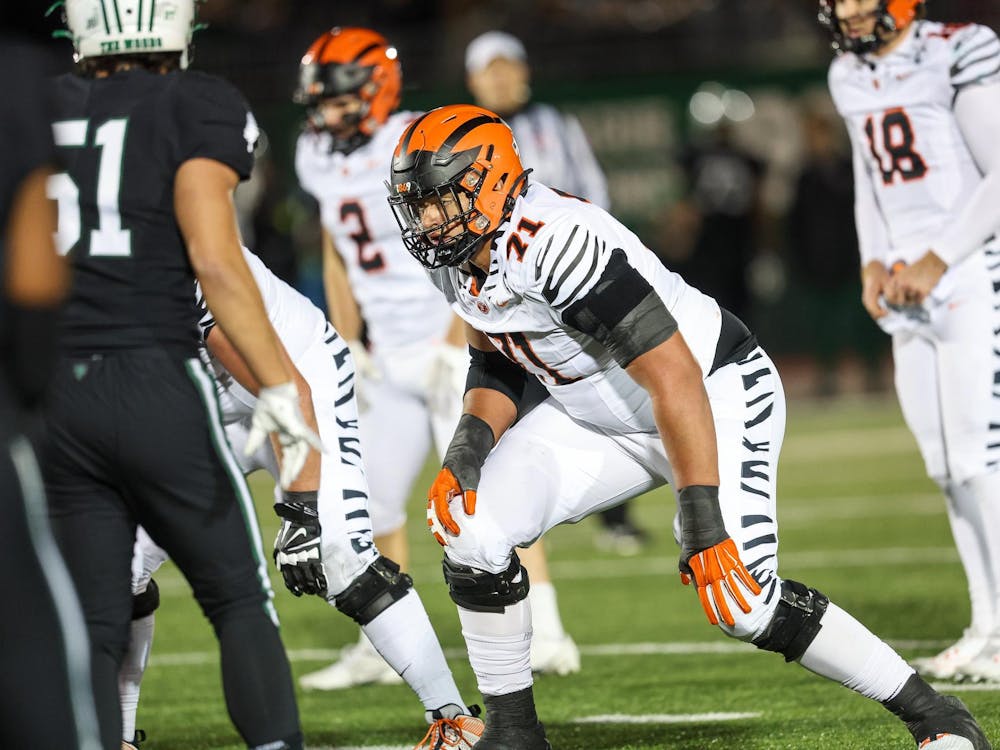But this kind of subjectivity is all too familiar to collegiate water polo players, at times entirely transforming their sport depending on the facility in which they play.
According to the NCAA specifications for the 2012-13 men’s national water polo championship, “It is recommended that the water temperature be maintained between 78 and 81 degrees Fahrenheit (25.6 and 27.2 degrees Celsius).”
What may seem like such a slight temperature difference to outsiders is actually a big deal and can counteract players’ conditioning.
“What people don’t realize is that we actually do sweat a lot in the pool,” junior attacker Kurt Buchbinder said. “When you first get in [and it’s cold], it’s like you have to warm up. But if you jump in and it’s like a spa, it’s like the equivalent of running around in 100-percent humidity.”
Even more problematic is the discrepancy of the depth of the pools. Conference games, and even championships, can be played in pools whose depths may vary if they were built before 1990.
“The way water polo works is that there’s supposed to be at least 7 feet of water so you can’t stand,” Buchbinder said. “There’s no wall, there’s no bottom. But then you have these pools that are remnants from the ’80s, which are like 4 feet deep on one end. So they try to keep the rule where you can’t jump off the bottom, but you’re literally standing there. So if you’re tall, you’re at an obvious disadvantage, because you’re really out to your waist.”
Junior goalie Ben Dearborn explained that the issue was further compounded by the inevitable and extreme subjectivity of the referees in these cases.
“If it’s blatant they call it, but they realize that it’s not practical to try to tread water in 3-foot water,” Dearborn said.
At Johns Hopkins’ Newton White Natatorium, the water level is hardly above waist-high in some places, making it seem like the teams are playing water basketball instead of water polo. “We stood and jumped around,” Buchbinder said.
This extreme subjectivity of water polo pools’ depths gives certain teams a fundamental advantage that is openly acknowledged by the sports’ community. Johns Hopkins’ Ross Schofield, in an article in last month’s Johns Hopkins News-Letter, admitted, “We want our pool to be the hardest place to play.”
“Our pool is also different from most pools, only being 25 yards and both ends shallow,” Schofield continued. “Practicing in this pool everyday gives us a huge advantage when teams come to play us.”
The variance in conditions under which water polo is played doesn’t stop at temperature and depth. In any athletic event, communication among players, and coaches, is key. Yet in water polo, certain facilities are built in ways such that make it hard to hear. Buchbinder pointed out that in some stadiums, like Bucknell’s and Yale’s venues, “You can’t hear anything.”

Water polo’s ever-changing nature is surprising considering its long history — it was one of the first team sports to debut at the 1900 Olympics. Despite such an established past, even the less-subjective aspects are evolving. Buchbinder pointed out that the pool in collegiate water polo was recently shortened by 5 meters, an alteration that considerably affects the way teams approach the sprints at the beginning of each quarter.
The variation of these seemingly minor aspects adds an entirely new dimension to how water polo players treat the game.
“You feel as though in sports, the conditions should remain pretty constant,” Dearborn said. “Human factors come into play a lot in water polo, you have the very, very subjective nature of the refs — probably more than any other sport — you have the size of the pool, the depth of the pool, the temperature of the pool.”
Perhaps playing in the comfort of their own familiar DeNunzio Pool helped the Tigers in both of their games last weekend. Princeton crushed Iona with an 18-9 win before beating George Washington 13-6 in a conference match.
The Tigers will begin the home stretch of their season next weekend at the Ivy League Championships in New Haven, Conn.







